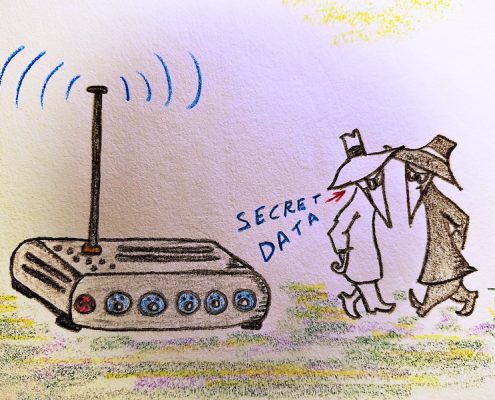From the lighter side of today’s news … sarin gas, fingerprinting is hard work, and hacking.
Protecting Against Toxic Chemical Attacks
- Scientists have successfully developed MOFs capable of deactivating toxic nerve agents. MOFs (metal-organic framework) are minuscule, porous structures that have large surface areas that allow for the absorption of gases and other materials. These MOFs also contain zirconium, which acts to neutralize toxic material, such as sarin gas.
A pinpoint-size drop of sarin on the skin is a lethal dose.
Using polypropylene, the stuff used to make plastic bags, along with thin layers of aluminum, titanium or zinc oxide. to make a protective coating for clothing material, researchers found that the treated-cloth successfully deactivated applied toxins. This is fantastic news for first-responders and soldiers. And us, to, if North Korea finally builds a slingshot large and powerful enough to lob a couple of sarin-gas-filled basketballs in our direction.
Perhaps it’s time to purchase and send gift cards for a shopping spree at that popular store, Gas-Masks-R-Us.

Fingerprint Examiners
- Fingerprint examiners are carefully selected for the job. In fact, it’s a special person who, for hour after hour, unapologetically stares at smudged ink and squiggly lines, all day long. The job is so demanding and specific that potential print examiners often must successfully complete a series of tests to get the first foot in the door. Next comes a certification course. Then, when all the classroom and practical training is said and done … it’s not an easy job.

Curious to know if you have what it takes to become a fingerprint examiner? Well, here’s your chance. Click the link below to see a sample of the test prepared by the U.S. Dept. of Commerce, National Institute of Standards and Technology. I think you might be in for a surprise.
Do You Have What it Takes to be a Fingerprint Examiner?
Hacking a Router
- Malware named xLED can infect common routers, a move that enables hackers to leak information, passwords, files, etc., from computers, even those with firewalls and other security measures and systems. This malware bypasses all security measures.

The way this works is nothing short of a Mission Impossible sequel. The malware causes the router’s LEDs (the lights that signal status) to blink and pulse in various ways—codes, if you will. Then, via a hidden remote camera, or by accessing and using the camera on your laptop (also remotely controlled by the hacker), the hackers record and decode the LED flashes. The xLED malware can program the LEDs to flash at lightning-fast speeds – more than 1,000 flickers per second for each LED.
Here’s a handy bit of news that’ll make you feel all warm and fuzzy … Specialized malware can siphon data from from numerous devices, not just cellphones and laptops. For example, it can suck private information from computer speakers, headphone jacks, external and internal hard drives, computer fans, 3D printers, smartphones, and even, as I mentioned above, LED bulbs. Yes, the Russians have all your recipes, cat photos, and vacation pictures. And, of course, writers, the FBI also has your search history. Yes, they know …


